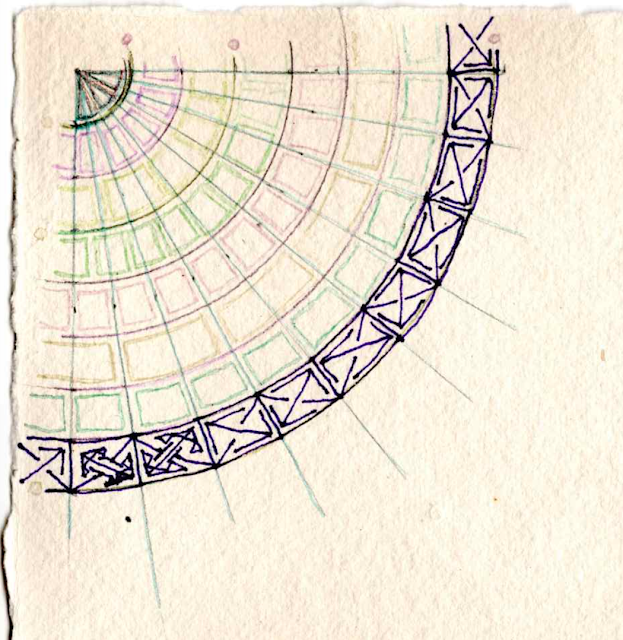Adele - Rescue Dog - 2025 04 08
Graphite, pencil crayon on tracing paper - 6 1/2" x 8 1/2"
It is a quiet late winter afternoon. Something about Adele's glance caught my eye and I was inspired to make a drawing.
The image in this post is a scan of a drawing. The process of drawing creates a space for contemplation, between the experience of observing Adele in the chair, capturing a series of photographs of the moment, selecting a photo to use as a reference for drawing, and then working up the drawing through a series of drawing sessions.
Adele has been curled up on one of her many favourite chairs, never more than a few steps away from me. Something in her surroundings has roused her and put her on alert.
Each drawing session (there were three or four to create this drawing), is a unique experience of consideration, of thinking about and persevering against the force of recurring questions:
Is this image worth drawing?
Are my artistic efforts worth doing?
What does this image say to me?
What does this drawing say to me?
Is it worth the work to make this drawing?
Is this drawing worth any more work?
Adele is not reclining in the big, soft chair. She is tense, ready to move. Her eyes are wide open and she intensely surveys her surroundings. She rests on her left elbow, with her right paw extending forward, ready to take her next step, off the chair and into action. Her jaw has tightened, her lips slightly pulled back, she is poised to snarl or bark.
Each drawing session is a performance of resistance against unseen and unknown forces that judge the value of the work I am doing and the results of that work. These forces are imagined. They are not explicit. I cannot put my finger on a specific memory of being asked these questions in relation to my art-making. There is a persistent internal refrain, "I cannot draw. You cannot draw. You are not good enough."
The shapes of the chair and Adele emerge from the surface through the aggregation of many lines and colours. Each application of line and colour builds intensity and definition around the edges, darkens areas of shadow, and leaves areas of light (the absence of line and colour).
Ellen Dissanayake (Dissanayake, 1995) discussed the role of art-making through a biobehavioral view, that is, that human creative works trace back to our earliest understandings of the evolution of human beings. Our investments in our creative works help us to understand the world, to make sense and meaning out of our experiences, so that we can discern our values, beliefs, and logistics, to answer our own persisten question, "What do we do now?"
The juxtaposition of light and dark, and warm and cool colours, creates an impression of movement, of kinetic energy captured in a moment of stillness. The dynamic lines convey intensity, movement, and form.
My life story is evidence that I can and will draw. An irrational persistence pushing back against patriarchy, capitalism and religion, that seeks to isolate my creative impulses with a strictly ordered aesthetic taxonomy.
In the drawing there is a contradiction between the comfort of the chair, and Adele's alert, activated posture. Shouldn't she be curled up in a warm ball, snug and serene? What was startled her into readiness for action?
It doesn't matter whether the drawings I make will hang in a gallery or a museum, or draw public acclaim. I will draw, and that is enough. My performance of art-making is also a performance of resistance against forces that would censor my creativity, and, in turn, censor my voice.
We are in a state of deep disruption and rolling, catastrophic system failure as organizational structures collapse due to self-destructive foundational philosophies based on dominance, profit and death cults. For my generation, we have never confronted the dark underbelly of toxic patriarchy, late capitalism, and religious abuse.
Through my creative works I make sense, I make meaning. I also build strength in my community through shared art-making sessions, which in turn, lead to shared sense and meaning-making. Our shared creative works help us to answer the question, "What do we do now?".
Spring is erupting outside in the garden. Adele is alert and ready to protect us. We are shaking off the slumber of ignorance and denial.
I made a drawing and this is what it taught me.




Comments
Post a Comment